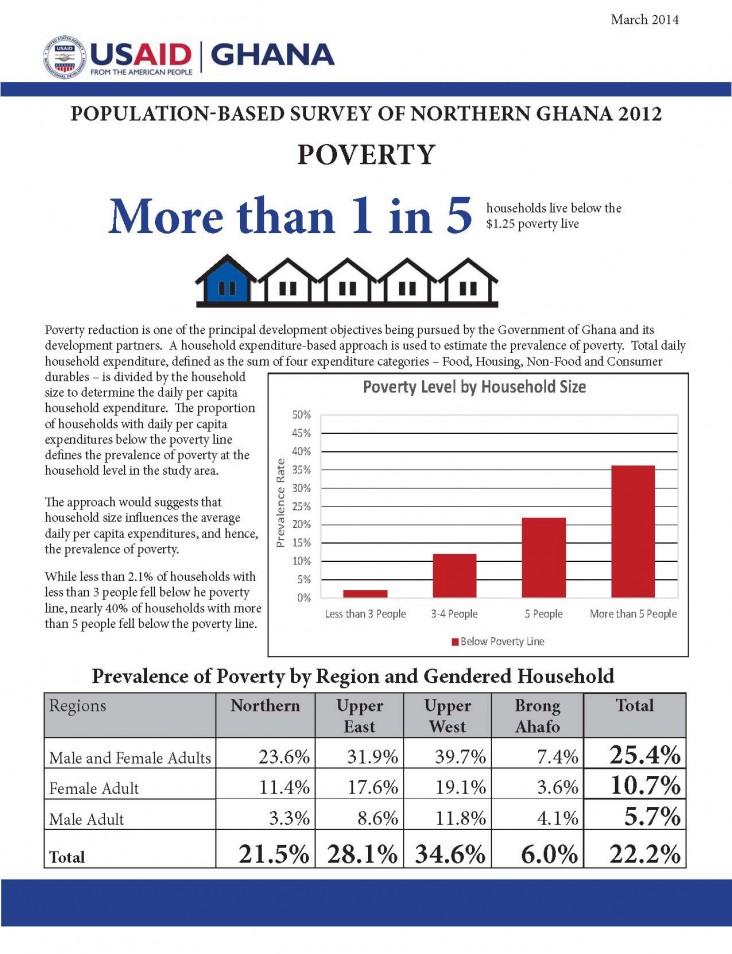
USAID GHANA-Population-Based Survey Results
For Immediate Release
USAID Rolls Out Population-Based Survey Results for 45 SADA Districts
Accra, Ghana — During an official data release conference, the U.S. Agency for International Development (USAID) presented results from its Population-Based Survey (PBS) Results at the Alisa Hotel.
In 2012, USAID/Ghana initiated a population-based survey of households in 45 of Ghana’s Savannah Accelerated Development Authority (SADA) Districts located in Ghana’s three northern regions (plus the northern districts of the Brong-Ahafo Region) in order to develop baseline indicators for its Feed the Future (FTF) activities in that area. The conference initiated a dialogue among development practitioners and policymakers about using the data to improve programmatic and policymaking activities.
“This data has potential to influence education decision-making, governance planning, media reporting and citizen knowledge in general,” noted Economic Growth Office Director Peter Trenchard highlighting the principle that open data serves to reinforce research-based, open and transparent governance.
The research conducted in 2012 concluded that more than one in five households live below the poverty line earning less than $1.25 per day, with the Upper West region experiencing the highest poverty rates. The survey determined that 67% of total household expenditures are allocated to food in the Northern tier. Alarmingly only 15.5% of children receive a minimum acceptable diet in Northern Ghana.
To monitor performance of its intervention investments in Ghana and provide a foundation for evaluating outcomes from such activities in relation to FTF, USAID conducted the baseline study in collaboration with the Institute of Statistical, Social and Economic Research, the Ghana Statistical Service who facilitated the sampling process and helped with gaining community support, and the Department of Agricultural Economics of Kansas State University. Over the next two weeks, USAID partners will travel around the country, visiting universities to provide faculty and researchers the data results while discussing what academic institutions can do to help further research.







Comment
Make a general inquiry or suggest an improvement.